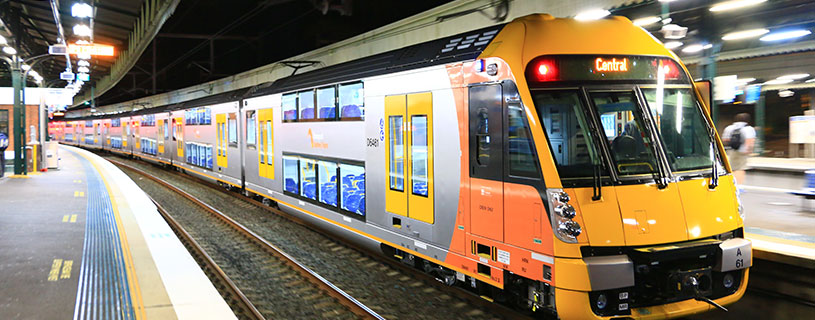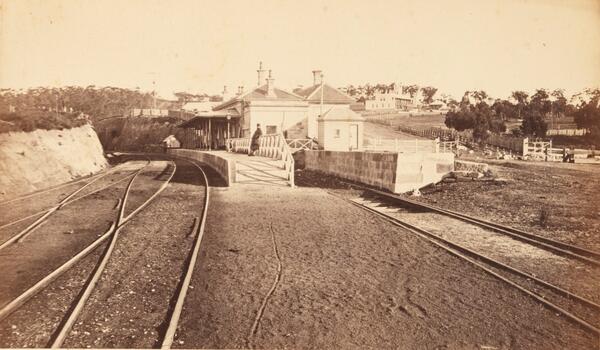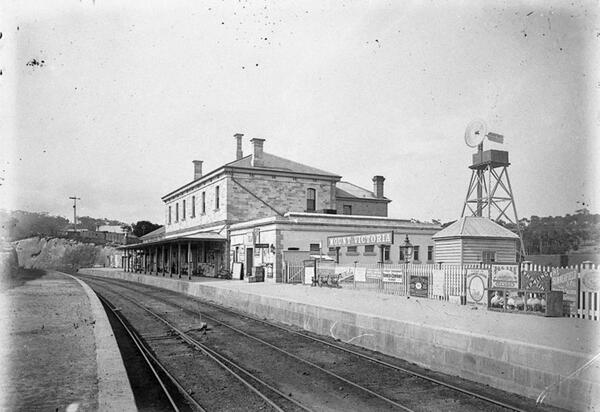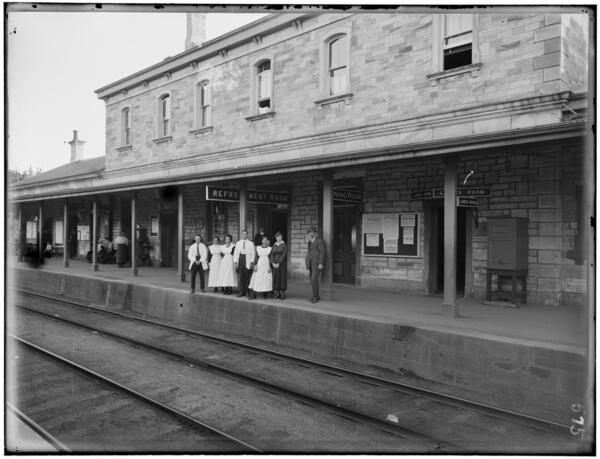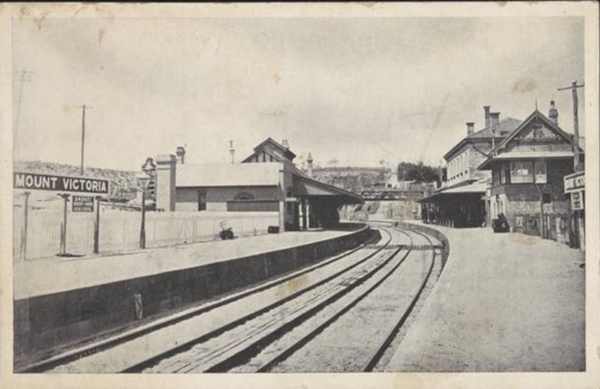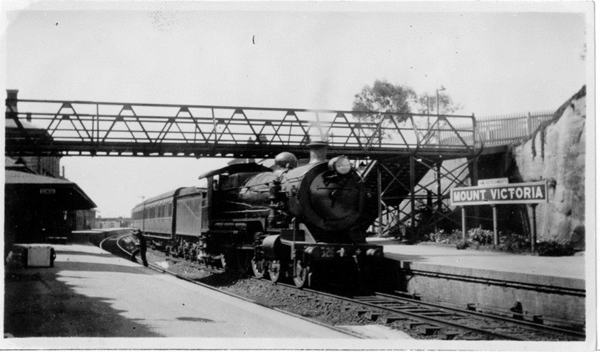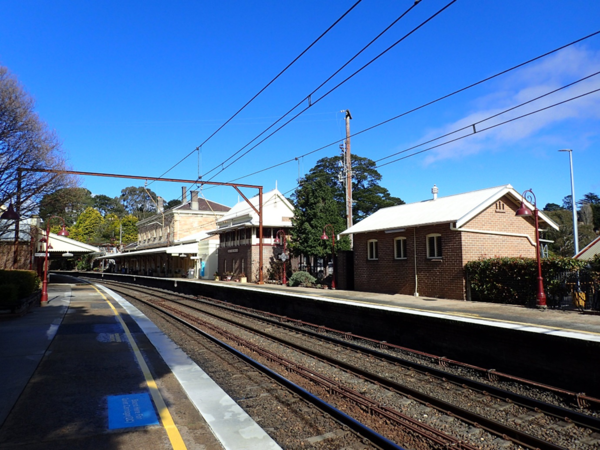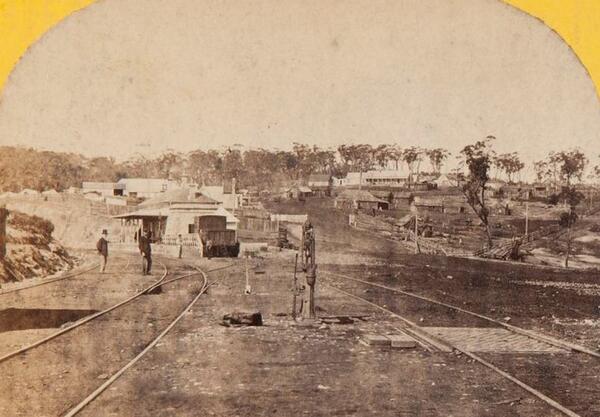
Welcome to Mount Victoria Railway Station Heritage Precinct
Mount Victoria Railway Station is located on the Main Western Line in the upper Blue Mountains.
The station opened on 1 May 1868 as the last stop on the Great Western Railway. Newspaper reports described it as "a model station and it would be well if the Government would repeat it as often as they have got occasion to build a railway station in the future". (The Sydney Morning Herald, 2 May 1868)
In 1868, the station included a single roadside platform, a small sandstone station building, a carriage dock platform, a Station Master’s residence, a goods shed, and a 40-foot locomotive turntable.
(Source of image: Caroline Simpson Library & Research Collection, Sydney Living Museums, 46431; photograph by Alexander Brodie.)
The Great Western Railway was extended beyond Mount Victoria in the 1870s. This meant that agricultural goods and passengers could be transported over the mountains and across NSW by rail.
The station was expanded several times between the 1870s and 1920s to support the new growth in passengers and goods, and early tourism to Jenolan Caves and local Blue Mountains health resorts. Railway travel guides of the 1880s promoted the location for its grand and beautiful scenery and its bracing air. Popular with tourists, it was common for 19th-century travellers to make Mount Victoria their base and to take excursions from there to the natural beauty spots of the Blue Mountains and further west.
(Source of image: State Library of NSW, ‘Views of Blue Mountains and Neighbourhood’, call no. PXA1109, image 15.)
The current complex of buildings includes an impressive, sandstone station building on Platform 2. This incorporates the original station building of 1867-68, and various additions dating to 1873, 1885, 1917 and later.
(Source of image: State Library of New South Wales, Hall Collection, Photographs of Sydney Streets, Buildings and People, 1900s-1930s, Home and Away – 35265.)
From 1873 the Platform 2 station building included a Railway Refreshment Room (RRR), where local staff served hot meals to passengers during breaks in their journeys. The RRR at Mount Victoria was known to have employed up to forty staff at any one time, in addition to casuals. This staff base contributed towards an increase in the local population of Mount Victoria.
One traveller from the 1880s made notes in the margins of his travel guide:
Supper 1s 6d, 20 mins (don’t all travellers remember the 20 minute stops for tea too hot to drink and meat pies too hot to eat, and the ‘All Abroad’ from the stationmasters— the cups standing on the platforms—some empty, some half full and some from which only a sip had been taken in the hurry to clamber abroad the train again for the journey).
(Source of quote: William A Bayley, Blue Mountains Railways, Austrail Publications, 1980, 21–22.)
(Source of image: Sydney Trains)
The precinct today also includes good examples of Federation-era station buildings, a barracks for railway engine drivers, an elevated railway signal box, and an overhead footbridge. These were all built between 1910 and 1912, around the same time as duplication of the railway from Mount Victoria to Lithgow. Duplication meant that the line was changed from a single track (where trains went out and back on the same line) to two tracks (where trains going in different directions were separated). Duplication of the Blue Mountains Railway led to more train services, faster services, and safer operation of the railway.
(Source of image: National Museum of Australia, Josef Lebovic Gallery Collection no. 1)
(Source of image: Australian Railway Historical Society NSW, 012367)
The 1950s was another major period of change at Mount Victoria when the passenger lines were electrified. Steam train facilities such as turntables, water towers, and coal loading banks were phased out. A new substation and overhead powerlines were built to supply electricity to the new trains. The RRR was also closed in this decade.
In 1971 the former RRR in the Platform 2 Station Building was leased to the Mount Victoria and District Historical Society. The society operates a local history museum in the building. The museum has a wide range of memorabilia and other collections related to Mount Victoria and the wider Blue Mountains districts.
The station is now listed on the State Heritage Register as a place of exceptional heritage value to the people of NSW.


